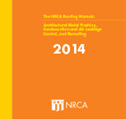Construction is rumored to be the second riskiest industry in the U.S., second only to the restaurant business. The risks are magnified during a market recovery, particularly after a long downturn. Prospering in cyclical markets and surviving a recession in the construction industry starts with recognizing what will happen in the marketplace when a market softens and then rebounds.
When there are fewer projects in any market, competition intensifies and prices and potential profits diminish. The ideal situation in a shrinking market would be for each contractor to accept proportionately less work so the market share of each business is maintained. However, there is a tendency in the construction industry to resist, sometimes strenuously, any reduction in sales and to fight vigorously for the fewer available projects, driving down prices for everyone.
Conversely, cooperating with the market and downsizing to align your organization with market realities is appropriate management of the risks imposed through an environment outside your control and in preparation for an eventual recovery. You cannot control the market, but you can control your response to it.
The economics
Unless a short downturn is expected, there is serious risk resources will be retained at great expense or, worse, the drain on an organization may make it difficult or impossible to finance recovery when the market finally rebounds.
A study I conducted of the economic dynamics of earlier construction market recessions and rebounds indicates the current developing recovery is going to be a financial struggle for many contractors. The primary reason is growth eats cash, and many firms have been straining financially during this unprecedented downturn to the extent they will have difficulty financing the growth.
My research is conclusive that during much of the recovery, margins will remain low because aggressive bidding, common during a recession, continues until the appetite of construction organizations is satisfied. My research also confirms the failure rate of construction enterprises is much worse during recoveries than during downturns.
Comprehensive strategies are necessary to manage risk and avoid losses, depleting capital or diminishing equity, weakening the ability to share in the recovery. Bonding capacity also may be affected, creating barriers to fully participating in the recovery.
Compounding the problem is the fact that in the three major construction market downturns during the past 40 years, aggressive bidding persisted until the market returned to previous sizes. Continuing aggressive bidding compresses margins when they are most needed. Contrast this with the healthy growth market of 2005-08 where the construction industry was able to finance growth with profits. Absent the profit potential, the recovery growth will require outside financing that will be problematic for financially weakened firms. Add the uncertainty that the banking industry is ready to re-engage in construction lending, for some companies, and it becomes the "perfect storm."
This exposure is compounded by the fact that in each stage of recovery, particularly after a sustained downturn, inflation is common and caused by labor shortages and material cost escalation and shortages. Material manufacturers and suppliers have suffered the same financial difficulties as contractors and have been forced to reduce capacity and unable to raise prices. Regaining capacity requires investment and takes time, causing material shortages that lead to rapid price increases.
If history repeats itself, contractors attempting to make up for lost ground will load up on cheap work, increasing their risks in already difficult circumstances. It bears repeating: You cannot control the market, but you can control your response to it.
Strategies
Because cyclical markets are the norm, there are distinct and tested strategies to survive during a down market. The primary objective in the beginning of a recovery should be to remain financially viable and credit worthy to enjoy and exploit the rebound when the market recovery develops more fully.
There are nine issues that will affect the construction industry during the recovery:
- Aggressive pricing will continue.
- Growth creates cash flow needs.
- Financing will be essential.
- Banks’ reactions are uncertain.
- Sureties’ reactions are uncertain.
- Labor shortages will occur.
- Labor skill level will diminish.
- Material shortages have begun.
- Labor and material costs are inflated.
A construction organization that has prospered during its growth already possesses the knowledge and blueprint for how to make money in a declining market by, basically, cutting overhead costs to match available sales. The challenge in the early and uncertain stage of a recovery is when to return to previous overhead and resources. It is easier for mature professionals who have experienced these types of cycles to accept some delay in participating in the initial recovery than for those who have not yet experienced the cycles. Those who recognize alterations in strategies are necessary and critical during market shifts will have minimal problems traversing the early stages of this recovery.
These proven strategies are painful but effective, and any business can be structured and organized to endure during a recovering market. Refusing to approach the recovery cautiously to traverse these unparalleled market conditions is a deliberate decision to participate in unprecedented aggressive pricing.
Construction organizations that take on more work and grow rapidly will dramatically increase their risk because growth eats cash. In earlier market downturns, aggressive bidding persisted until the market returned to or near its previous size. If the added work is not particularly profitable, the increased sales will afford minimal help when financing the growth. The risk is compounded for organizations that have been financially weakened during the protracted downturn because rapidly growing companies will be exposed to the potential of spending themselves out of business.
In the past, many contractors relied on bank credit to finance growth; however, this funding source is complicated by the banking industry’s apparent reluctance to re-engage in construction lending. Sureties also will be a problem. Similar to banks, sureties rely on the financial strength of an enterprise to extend or increase bond credit. Bond underwriters, which are profit-minded insurance companies, are confronted with an industry that has been weakened by almost four years of slumping sales during a time when owners are increasingly looking to protect their investments by expanding bonding requirements.
If all this is not enough, some contractors anticipating growth to their former sizes may experience difficulties with bond credit if their working capital and/or equity have been partially consumed to span the downturn.
Other challenges
The skill level of the construction workforce has been a common long-standing complaint among industry observers. From field labor to management, the construction workforce has reduced proportionately as the market diminished. Some will return as they are needed, but others have moved on to different occupations, retired or otherwise departed for lack of work.
Even skilled workers who return to the industry will have a lot of catching up to do as technology, to which they have not been exposed, continued to progress. Diminishing skills at all levels makes it that much more difficult to profit from work captured at extremely low margins—and in some cases unrealistic pricing.
The ready supply of construction materials reduces as the market contracts, and capacity is reduced as material production idles.
During a market rebound, capacity does not immediately reappear. It takes time to bring production back on line, and there is a cost to doing so. Manufacturers and suppliers are not likely to respond to shortages until there is a certain recovery creating a sustainable demand for their products.
The availability of labor and materials responds rapidly to the realities of "supply and demand." If there is a shortage of an item, even for a limited time, the price of that item increases almost instantly. In the current circumstances, the beginning of material shortages already is pushing prices up, and the sure-to-follow labor shortages will do the same. Manufacturers have minimal incentives to resist price increases, and the common reaction to a labor shortage is to overpay to attract or keep people.
I wish I could say "some" of these issues will affect "some" projects. However, the reality is all these issues have either occurred or will occur and will, without question, affect all projects. With these factors affecting work captured with already thin margins, profits will suffer and the escalating potential for loss could be disastrous—particularly in an industry in which inflation clauses are difficult to obtain.
Business failures already are occurring, disrupting project schedules and slowing projects, affecting other contractors on the projects with the potential of creating a domino effect. The best defense is an awareness of these risks and attempts to minimize and manage them.
Thomas C. Schleifer, Ph.D., is a construction industry management consultant, turnaround expert and research professor at the Del E. Webb School of Construction, Arizona State University, Phoenix.
For an article related to this topic, see: "Recessions and rebirth," May 2009 issue



